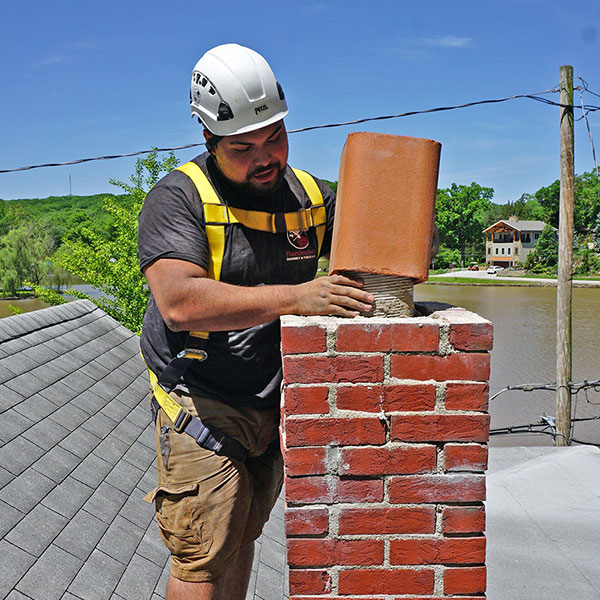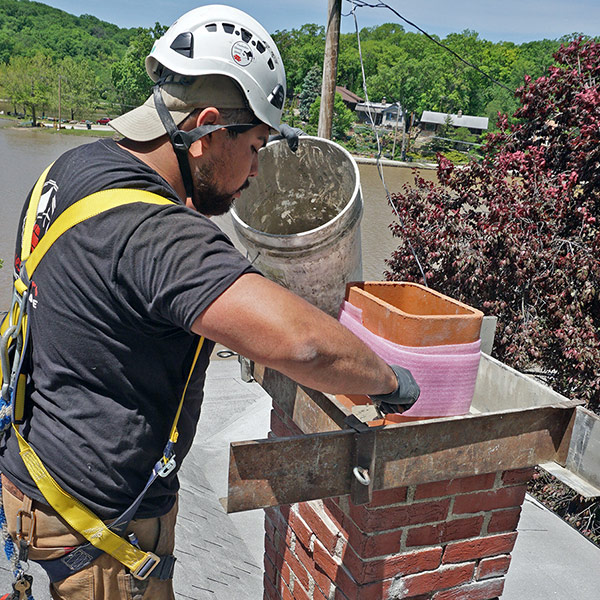 The National Bureau of Standards assessed chimneys in the 1940s and concluded that the woodwork in home construction next to an unlined chimney could catch fire in under four hours. It was a startling discovery that led to the adoption of flue liners. Today, building codes require chimneys to have a flue liner. However, there are still some older homes built before this requirement and have an unlined chimney, which poses an extreme fire risk.
The National Bureau of Standards assessed chimneys in the 1940s and concluded that the woodwork in home construction next to an unlined chimney could catch fire in under four hours. It was a startling discovery that led to the adoption of flue liners. Today, building codes require chimneys to have a flue liner. However, there are still some older homes built before this requirement and have an unlined chimney, which poses an extreme fire risk.
House Fires
A flue liner is so crucial for fire prevention that you should not light the fireplace or heating stove if it’s damaged. Most chimneys have clay tile liners. It is inexpensive, durable, and effective, but cracks are especially common with clay liners. The high temperatures and corrosive gases in the chimney can cause the tiles to crack, warp, or burst increasing the risk of soaring heat in the fireplace spreading to nearby combustible construction materials. Also, an accumulation of creosote building on the liner can ignite a chimney fire. Many homeowners don’t realize they even had a fire in the chimney until a chimney inspection reveals fire damage to the flue liner.
Toxic Gases
A chimney liner prevents dangerous gases from seeping into the house. Even a small crack can be a passageway for harmful gases to leak into the living space. Carbon monoxide is particularly toxic. Since carbon monoxide is an odorless, tasteless, and colorless gas, it isn’t easy to detect without a CO detector. It can build up to fatal levels, especially when everyone is sleeping. That’s why carbon monoxide poisoning is also known as the silent killer, and it can result in tissue damage and death with prolonged exposure.
 Chimney Damage
Chimney Damage
Combustion byproducts are highly acidic, and they corrode the interior of the chimney over time. If the flue liner is cracked, these acidic materials can damage the brick and mortar. Without intervention, the chimney can develop structural problems causing it to lean, and might even collapse if repairs are not completed timely. Chimney repairs can get costly if ignored, especially if a partial or complete rebuild is necessary.
Inefficient Operation
A cracked flue liner can also impede the efficiency of a wood or gas fireplace or stove. The chimney needs an efficient draft to draw in oxygen and expel the toxic byproducts of the combustion process up the flue where it exits the home. However, cracks in the flue cause drafting problems and the unequal air pressure in the chimney can make your fireplace perform inefficiently.
Wrong Flue Size
A chimney that has an improperly sized flue for the heating appliance often leads to flue liner damage. It can cause excessive creosote accumulation, which accelerates the liner’s deterioration, increasing the risk of fire and exposure to toxic fumes.
Annual chimney inspections are necessary because the signs of flue liner damage are not always visible. Regular chimney cleanings will also prolong the lifespan of the flue liner. When it’s time for a flue liner repair or replacement, many homeowners choose a stainless-steel liner. It is more durable, efficient, and easier to maintain. Schedule an appointment with a professional chimney sweep to evaluate the actual condition of your flue liner.



